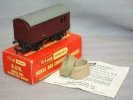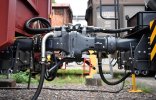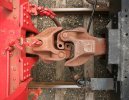CBlue
Member
Is it though? The King's Cross debacle on Friday that kicked this discussion off wasn't due to coupler incompatibility, more to do with an EMU tangled up in the overhead wires. Coupling adapters exist anyway for that sort of eventuality.But that is precisely where the major delays etc that make it into the media are happening, where one unit fails and is incapable of even emergency rescue just with coupling/air brake, by loco, other unit, or whatever.
Sometimes it feels like this forum wants some kind of Schrödinger's railway. Everything is too monotonous and boring with attempts to standardise fleets in particular regions - yet at the same time there's apparently too much variety because a IET can't couple to a 700 or something.




